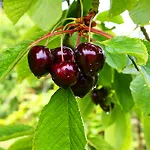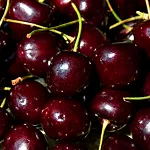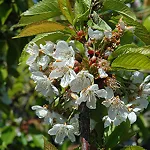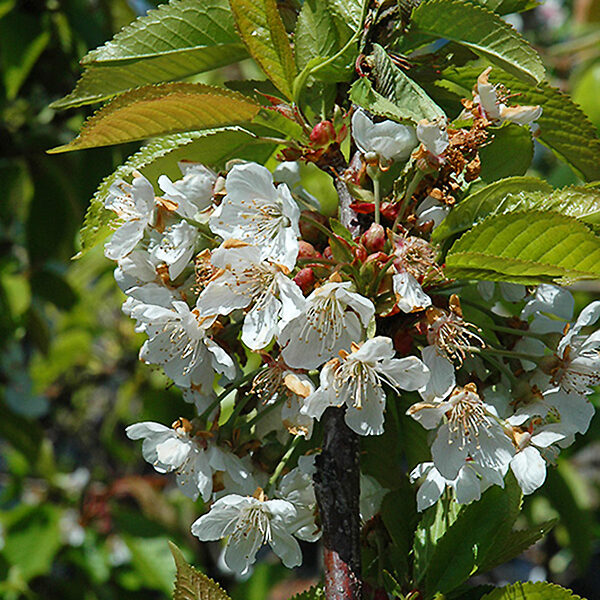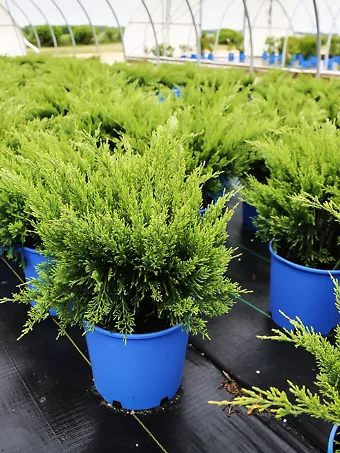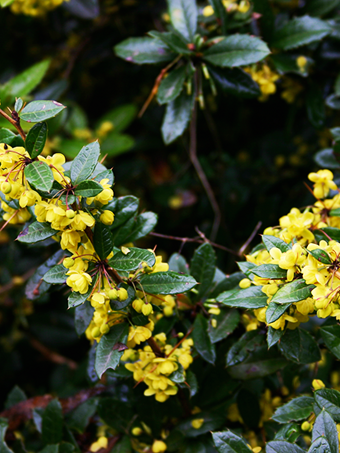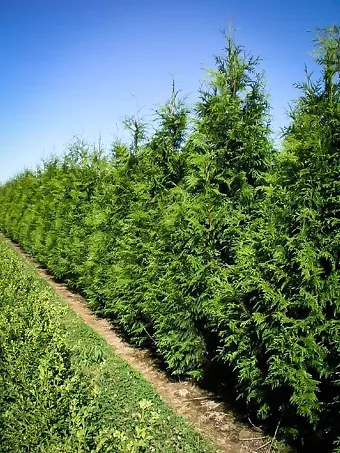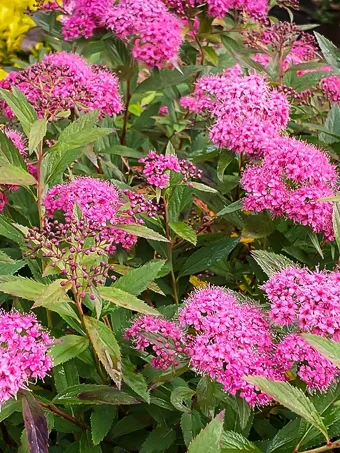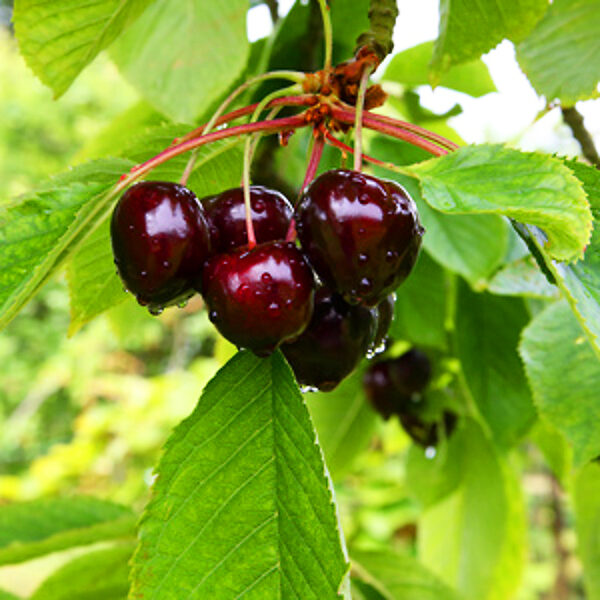
Sam Cherry Tree
Prunus avium ‘Sam’View more from Cherry Trees
Sam Cherry Tree
Prunus avium ‘Sam’
30 day - ARRIVE AND THRIVE™ guaranteeLearn more


Special Features

Botanical Name
Prunus avium ‘Sam’
Outdoor Growing zone
5-9
Mature Height
15-18
Mature Width
15-18
Sun needs
Full Sun
The Sam Cherry Tree is a beautiful medium-sized cherry with a very dark-red skin that doesn’t crack, and bright red flesh that is firm, juicy, and balanced for sweetness and acidity. On a tree that will become 15 feet tall and wide within 10 years, you can look forward to harvests of 50 pounds or more. With a fantastic, strong, lingering cherry flavor, they are ready to eat fresh, back into pies, or turn into preserves. The beautiful snow-white blossoms in spring earn this tree a place in your flower garden.
- Juicy dark-red cherries in abundance
- Ready in late July
- Mature tree can yield over 50 pounds of fruit
- Easy to grow all across the country
- Pollinate with the Stella cherry tree
Full sun or some partial shade suit the Sam Cherry Tree perfectly. Grow it in any well-drained soil, and it has a preference for neutral to acidic loam soils. Any pest or disease issues are normally very minor, and a good crop is easy to grow. Prune in late winter to develop an open crown and stimulate new shoots. Needs a suitable pollinizer variety – we recommend the Stella cherry.
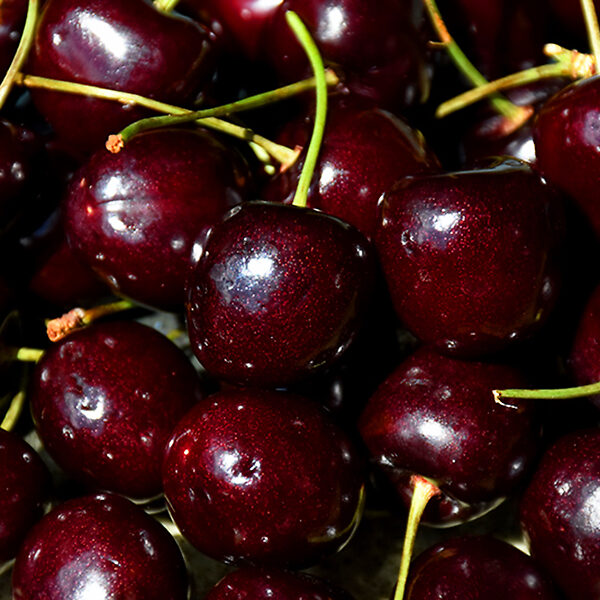
Sweet cherries are such a joy. Delicious to eat straight from the tree, or baked into wonderful cherry pie, they are an annual treat everyone loves. Imagine growing your own, right in your own garden, picking them fully ripened on the tree, and then sitting in the sun (or shade) and eating them straight from the basket. You know they are good, and you know exactly what has (or hasn’t) been used to grow them. If you grow your own, you want the best – packed with flavor and truly delicious. That is where the ‘Sam’ Cherry fits the bill perfectly. This delicious cherry is renowned for its amazing lingering flavor. The dark skin wraps around dark-red flesh which is firm and juicy, with the perfect blend of sweetness and just a dash of tart. That little bit of tartness also makes it an excellent baking cherry. Since you can expect to harvest up to 50 pounds of cherries from a mature Sam Cherry Tree, you will certainly have plenty for baking and making preserves, as well as gifting to your family and neighbors your very own home-grown cherries. Usually ripening by the end of July, and through August, it perfect for summer parties and chilled pie with ice-cream. Sit back, enjoy, and be proud of your home-grown cherries.
Growing the Sam Cherry Tree
Size and Appearance
The Sam Cherry Tree is an upright small deciduous tree, reaching 15 to 18 feet within 10 years, with a similar spread, becoming wider with age. The bark is very beautiful, a rich, glossy, purple-brown, decorated with prominent lighter gray-brown bands. Older stems become more ridged and grooved, with a dark, rugged look. The leaves are dark-green and glossy, averaging around 4 inches long and 2 inches wide, with a pronounced slender tip and serrated edges. In fall they turn shades or orange, pink and red, making an attractive display.
Flowers appear in early April, along with the first tiny leaves. They are typically in pairs, but can be in clusters of up to 6 blossoms. The flowers are about 1-inch across, and pure, snowy white, with yellow stamens in the center. A tree in bloom is charming to see. Like many sweet cherries, the Sam Cherry Tree needs to be grown with a different variety to act as a pollinizer – the pollen will be distributed by bees. Not many varieties are favorites, but we recommend the Stella cherry, which is also a ‘universal pollinizer’ for most cherry varieties. Plant within 50 feet of each other. Other possible pollinators you might already have include ‘Van’, ‘Bing’, and Napoleon’ (also known as Royal Ann).
The cherries develop quickly, and unlike many other fruits, it isn’t necessary to thin the crop. They are ripe and ready to eat by late July, and continue through August. They are medium-sized, with the classic ‘heart’ shape, and a very dark-red skin. They generally don’t crack, so they won’t begin to rot on the tree, as some varieties tend to do. The flesh is firm but moist, balanced for sweetness and tartness, with a pronounced ‘cherry’ flavor – one of the very best. The flesh is bright red, and so juicy it will stain your fingers. A mature tree will yield upwards of 50 pounds of fruit each season.
Using the Sam Cherry Tree in Your Garden
Beautiful in bloom, with lovely bark, and gorgeous when dripping with ripe cherries, the Sam Cherry Tree can certainly be grown as an ornamental tree on your lawn. Of course if you have an orchard area, plant it there with your other fruit trees.
Hardiness
The Sam Cherry Tree is hardy almost everywhere, from zone 5 into zone 9. It grows best in climates with sunny summers that are not too hot.
Sun Exposure and Soil Conditions
For best results, plant in full sun, although a few hours of shade each day is acceptable too. This tree grows in most well-drained soils, preferring neutral or acid soil, and richer soils that hold moisture, so enrich well when planting. Too much drought could damage your crop.
Maintenance and Pruning
Although some diseases and pests are possible, in general, cherry trees grow well and are rarely bothered to any significant degree. When young, don’t allow the crown to become crowded with branches. Remove extra stems and weak branches in late winter, and build an open tree. Older trees should have a few branches removed every year or two to encourage new, vigorous growth, and shorten back long stems to encourage fruiting.
History and Origin of the Sam Cherry Tree
The sweet cherry, Prunus avium, is native to most of Europe, from the British Isles to Turkey. There are a relatively small number of varieties, compared to many other fruit trees, and the variety called ‘Sam’ was created by professional breeders at the Summerland Research and Development Centre, Agriculture and Agri-Food Canada. It is in the Okanagan Valley, a major fruit-growing area of British Columbia. Breeders too fruit from an older variety called ‘Windsor’ and grew many seedlings. Among them was one with outstanding flavor that they named ‘Sam’ and released in 1953. It could have been named after Sam Cherry, a well-known commercial artist of the 1940s, known for his lurid covers of pulp western books, magazines, and pin-up calendars.
Buying the Sam Cherry Tree at the Tree Center
Enjoying home grown fruit is not so difficult, and the ‘Sam’ Cherry is a great way to get started. Within a few years you will be harvesting baskets of beautiful cherries you won’t be able to believe came from your own garden. Proudly put top-quality fruit on your table, but order now, because stocks are already getting low.
